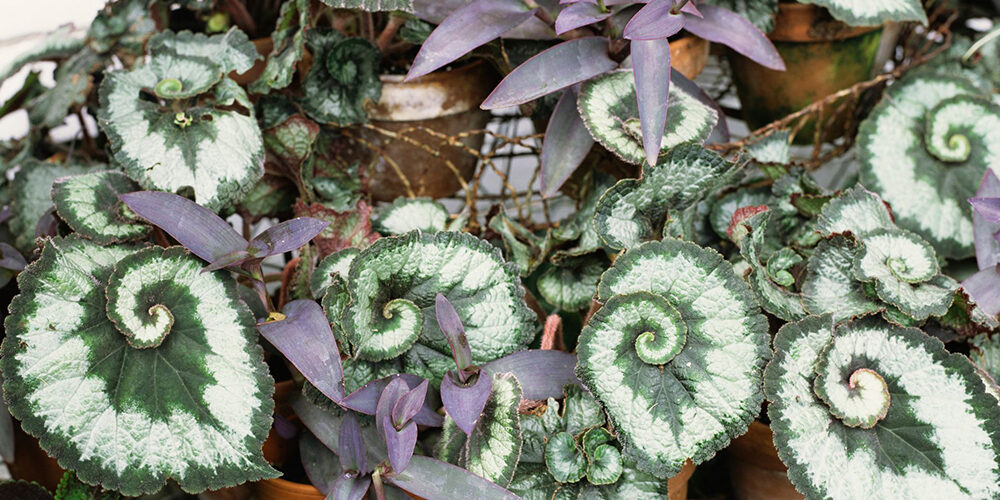Growing Begonias

Popular bedding plants since the Victorian era, flowering begonias also add an air of tropical jauntiness to container gardens. In vivid shades of red, pink, white, yellow, apricot, and salmon, begonias may go in and out of style but are always dependable when you crave a shot of color in the garden.
With nearly 2,000 species that fall into three broad categories—tuberous, rhizomatous, and fibrous–there is a begonia for every garden. In cool climates, begonias thrive as container plants and may be grown as annuals in the garden. Native to tropical and subtropical regions of Africa, South America, and Central America, begonias most begonias will not appreciate cold temperatures. And their definition of cold is generally “below 50 degrees Fahrenheit.” An exception is Begonia grandis, a hardy begonia that grows as a perennial in cold regions.
Among our other favorites are Begonia rex species, prized for their beautifully colored and textured leaves. But be warned; they are finicky. ) Another favorite, ‘Angel Wing’ is an elegant cane begonia with lacy foliage and pretty pink flowers.
The workhorses of the begonia world are tuberous begonias, hybrids bred for showy flowers and bright colors. In plant nurseries, you can find cultivars with frilly petals, ruffled petals, picotee petals, double petals, single petals–as well as a group of camellia lookalike.
A hardy begonia that could survive northeast winters is something I never dreamed existed until a few years ago when, wanting a crash course in gardening techniques.
With its graceful panicles of bright pink flowers and pointy angel wing leaves that are bright green on top with veiny fuchsia undersides, the 2-foot-high “Heron’s Pirouette” cultivar contrasted artfully with its darker-hued neighbors. Because Jennifer was generous and understood that her unpaid workforce was crazy for plants, I was able to secure some Begonia grandis for my own garden. Her policy was that if any plants migrated to the dirt path, the volunteer who removed them could take them home. As a most enthusiastic clearer of pathways, I soon had several patches of these plants thriving in the shady areas of my backyard.
Planting
- Deadhead the cascading white or bright pink flowers to keep your plants in bloom from mid July to fall.
- In the right spot, hardy begonia will naturalize. It will also self-propagate by means of tiny bulb-lets which form in the leaf axils in autumn.
- As temperatures cool in the fall, hardy begonia will deteriorate and literally fall apart, but resist the impulse to remove it to avoid displacing the bulb-lets which, if left undisturbed, will likely land on the ground and sprout the next spring.
- Begonia grandis combines well with classic woodland plants such as hostas, ferns, and hellebores. It also complements Daphne odora, Japanese forest grass (Hakonechloa macra ‘Aureola’), and Paperback maple (Acer griseum) as well as natives such as Solomon’s seal (Polygonatum) and sweet woodruff (Galium odoratum).
Care
- Plant in part or full shade in rich, moist soil that should not be allowed to dry out.
- Begonia grandis will appreciate the addition of compost in the spring but does not need added fertilizer.
- Hardy in zones 6 to 9 but should be mulched during the winter in colder areas. With a heavy mulch, it can even sometimes be stretched to zone 5.
- Plant in a sheltered spot as begonias are fragile and easily damaged by wind or trampling by people or pets.
Website: www.gardenista.com